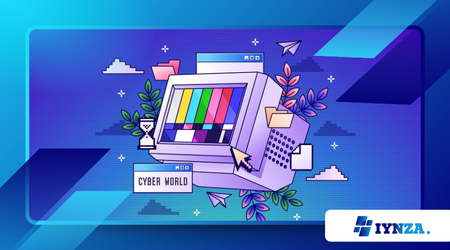The Indie Game Revolution: How Crowdfunding Is Shaping the Future

Over the past two decades, the gaming industry has transformed dramatically, shifting from a market dominated by AAA publishers with multimillion-dollar budgets to one where independent developers thrive.
Anúncios
The Indie Game Revolution has redefined success in gaming, proving that creativity, innovation, and direct player engagement can rival even the biggest industry giants.
Games like Hollow Knight, Stardew Valley, Celeste, and Hades have not only achieved critical acclaim but have also outperformed many big-budget titles in terms of sales and player engagement.
But how exactly has crowdfunding shaped indie game development? What challenges do independent developers face, and what does the future hold for this exciting movement?
Let’s dive deeper into the rise of indie games, the impact of crowdfunding, and what lies ahead for independent game developers.
The Rise of Indie Games: A New Era in Gaming
For much of gaming history, development was controlled by large publishing companies with vast financial resources. Studios that wanted to succeed had to secure funding from major publishers, often sacrificing creative freedom in the process.
However, as gaming technology evolved and digital distribution platforms emerged, indie developers found new ways to create and distribute their games.
The launch of Xbox Live Arcade, Steam Greenlight, and later, the Epic Games Store and itch.io opened the floodgates for independent creators to reach a global audience without needing traditional publishers.
As a result, players began to take notice of smaller, passion-driven projects that brought fresh and experimental gameplay to the table.
Unlike AAA studios, which often rely on safe, commercially viable formulas, indie developers had the freedom to innovate.
They explored unique art styles, deep narratives, and creative mechanics, leading to the rise of critically acclaimed hits like:
- Braid (2008) – Introduced time manipulation mechanics in a platformer, challenging players’ perceptions of puzzle-solving.
- Super Meat Boy (2010) – Pioneered the modern precision-platformer genre, proving that difficulty could be fun.
- Undertale (2015) – Created a player-driven RPG where morality shaped the game’s outcome, redefining storytelling in games.
This shift in player preferences toward original, story-rich experiences signaled that indie games were not just a niche interest, but rather a legitimate force in the gaming industry.
You may also be interested in: The best indie games you’ve never played (but should!)
How Crowdfunding Fuels the Indie Game Revolution

Crowdfunding has become a game-changer for independent developers, allowing them to create and release games without the constraints of traditional publishers.
This player-driven funding model has enabled some of the most innovative and successful indie titles to flourish, proving that community-backed development is a powerful force in the industry.
1. Creative Freedom
One of the biggest advantages of crowdfunding is that developers retain full creative control over their projects.
Unlike traditional publishing deals, where game studios often have to compromise on their vision to meet investor demands, crowdfunding allows creators to stay true to their artistic direction.
This means that indie developers can take risks, experiment with unique storytelling, unconventional mechanics, and fresh visual styles, without worrying about whether their ideas align with corporate profit goals.
A great example of this is Undertale, a crowdfunded RPG that subverted traditional combat mechanics, offering players the choice to spare enemies rather than fight.
A traditional publisher might have dismissed such an approach as too niche, but thanks to crowdfunding, the game was able to flourish and develop a passionate fanbase.
2. Community Engagement and Player Investment
Crowdfunding is not just about raising money—it’s about building a loyal community from the very start.
Players who contribute to a campaign feel personally invested in the game’s development, often acting as its most vocal supporters and marketers.
Through regular updates, behind-the-scenes content, and exclusive rewards, developers create a strong bond with their backers, leading to a highly engaged audience that is eager to promote the game through word of mouth.
This kind of direct developer-player interaction fosters trust and helps developers fine-tune their projects based on community feedback.
A great example of this was Hollow Knight, which began as a modest Kickstarter project but quickly gained a dedicated fanbase that helped spread excitement about the game.
By the time it launched, it already had thousands of eager players, making its success almost inevitable.
3. Market Validation and Risk Reduction
For indie developers, one of the biggest challenges is knowing whether there is an actual demand for their game before investing years of work into it. Crowdfunding serves as an excellent market validation tool, providing a clear indicator of interest.
If a project reaches its funding goal quickly, it shows that there is strong demand, giving developers confidence that their game has a viable audience.
On the other hand, if a campaign struggles to gain traction, it can signal that adjustments are needed—whether in game design, marketing, or pricing strategy—before committing further resources.
This model significantly reduces financial risk, as developers avoid sinking time and money into a project that might not succeed in the marketplace.
Unlike traditional funding, where a single investor or publisher shoulders the financial burden, crowdfunding distributes the risk among thousands of backers, making it a more sustainable approach for indie studios.
4. A Proven Alternative to Traditional Publishing
The success of crowdfunded games like Shovel Knight, Divinity: Original Sin, and Hades proves that crowdfunding is not just a trend—it’s a viable alternative to the traditional publishing model.
It allows developers to focus on making great games for their audience, rather than chasing trends dictated by corporate interests.
As crowdfunding continues to grow, it is likely to play an even larger role in the future of game development, giving indie creators more opportunities to bring their visions to life while strengthening their connection with the gaming community.
Success Stories: Crowdfunded Games That Became Hits
Several crowdfunded indie games have gone on to become massive commercial and critical successes, demonstrating the power of community-driven development.
Hollow Knight (2017)
Originally funded through Kickstarter, Hollow Knight raised over $57,000 from backers who believed in its hand-drawn art, challenging combat, and expansive world-building.
The game later became one of the best-selling metroidvanias of all time, with a sequel (Silksong) eagerly anticipated by fans.
Shovel Knight (2014)
One of the earliest major Kickstarter success stories, Shovel Knight reached 400% of its funding goal, allowing the developers to expand the game far beyond their initial vision.
It went on to become one of the best-reviewed indie platformers, spawning expansions and spin-offs.
Hades (2020)
While Hades didn’t use traditional crowdfunding, it utilized an early access model, allowing players to fund its development while providing real-time feedback.
The result? A polished, award-winning roguelike that became a benchmark for player-driven game development.
These examples highlight how crowdfunding allows indie developers to take creative risks, leading to some of the most innovative games in the industry.
Challenges of Crowdfunding in Game Development
Despite its many benefits, crowdfunding is not a guaranteed path to success. Many developers struggle with meeting deadlines, budget constraints, and high expectations from backers.
Development Delays
Many crowdfunded games face significant delays, often because developers underestimate the time and resources needed to complete their projects.
Games like Mighty No. 9 and Shenmue 3 suffered from excessive development times, leading to disappointed backers.
Budget Mismanagement
Not all developers properly allocate funds, resulting in unfinished or low-quality releases. Without careful planning, even a successful crowdfunding campaign can lead to financial ruin.
Managing Player Expectations
Backers expect regular updates, communication, and promised features, which can add pressure on small development teams. Some projects fail to deliver, leaving backers frustrated and skeptical of future crowdfunded games.
To navigate these challenges, transparency, strong budgeting skills, and realistic project scopes are essential.
The Future of Indie Games and Crowdfunding
The Indie Game Revolution is far from over. As technology evolves and funding models improve, indie developers will continue to push the boundaries of what games can be.
What’s Next for Indie Crowdfunding?
- Hybrid Funding Models – Developers will combine crowdfunding with early access or investor partnerships.
- Decentralized Development – Blockchain-backed funding models could redefine player investment in game development.
- More Support from Platforms – Companies like Steam and Epic Games will likely provide more tools for indie marketing and funding.
Indie gaming will only grow stronger, with new funding opportunities and innovative business models paving the way.
Conclusion
The Indie Game Revolution has proven that small teams with big ideas can challenge even the most established AAA studios.
Thanks to crowdfunding, independent developers now have the tools to bring their visions to life without sacrificing creative freedom.
The continued success of indie games showcases the power of player-driven development, emphasizing creativity, innovation, and passion over corporate profit margins.
As gaming continues to evolve, independent developers will remain at the forefront of innovation, shaping the future of interactive entertainment.
With continued community support and advancements in crowdfunding, the best of indie gaming is yet to come.
